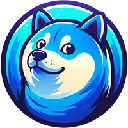-
 bitcoin
bitcoin $87959.907984 USD
1.34% -
 ethereum
ethereum $2920.497338 USD
3.04% -
 tether
tether $0.999775 USD
0.00% -
 xrp
xrp $2.237324 USD
8.12% -
 bnb
bnb $860.243768 USD
0.90% -
 solana
solana $138.089498 USD
5.43% -
 usd-coin
usd-coin $0.999807 USD
0.01% -
 tron
tron $0.272801 USD
-1.53% -
 dogecoin
dogecoin $0.150904 USD
2.96% -
 cardano
cardano $0.421635 USD
1.97% -
 hyperliquid
hyperliquid $32.152445 USD
2.23% -
 bitcoin-cash
bitcoin-cash $533.301069 USD
-1.94% -
 chainlink
chainlink $12.953417 USD
2.68% -
 unus-sed-leo
unus-sed-leo $9.535951 USD
0.73% -
 zcash
zcash $521.483386 USD
-2.87%
How to connect to Bitfinex's WebSocket API?
Bitfinex's WebSocket API enables real-time data streaming and trading; use an API key, WebSocket client, and JSON knowledge to connect and manage subscriptions effectively.
Apr 14, 2025 at 05:56 am

Understanding Bitfinex's WebSocket API
Bitfinex's WebSocket API is a powerful tool for real-time data streaming and trading on the Bitfinex exchange. It allows developers to receive market data, place orders, and manage their accounts in real-time. To effectively use this API, it is essential to understand its structure and capabilities.
The WebSocket API operates over a persistent, full-duplex communication channel, which means that once a connection is established, data can be sent and received simultaneously. This is particularly useful for applications requiring low-latency data updates, such as trading bots and market analysis tools.
Prerequisites for Connecting to Bitfinex's WebSocket API
Before you can connect to Bitfinex's WebSocket API, there are several prerequisites you need to fulfill:
- API Key and Secret: You need to generate an API key and secret from your Bitfinex account. This is crucial for authentication and accessing your account's data.
- WebSocket Client: You will need a WebSocket client library compatible with your programming language. Popular choices include
wsfor Node.js,websocket-clientfor Python, andWebSocket++for C++. - Understanding of JSON: The API communicates using JSON, so a basic understanding of JSON is necessary to parse and construct messages.
Establishing a Connection to Bitfinex's WebSocket API
To connect to Bitfinex's WebSocket API, follow these detailed steps:
Choose a WebSocket Library: Select a WebSocket library that suits your development environment. For this example, we'll use Python's
websocket-clientlibrary.Install the Library: Install the library using pip:
pip install websocket-clientImport the Library: In your Python script, import the necessary module:
import websocketDefine the WebSocket URL: Bitfinex's WebSocket API URL is
wss://api-pub.bitfinex.com/ws/2. Use this URL to establish a connection:ws = websocket.WebSocket()ws.connect('wss://api-pub.bitfinex.com/ws/2')Send Authentication Request: If you need authenticated access, you must send an authentication request. Construct the authentication message using your API key and secret:
import jsonimport hmacimport hashlibimport timeapi_key = 'your_api_key'api_secret = 'your_api_secret'
nonce = str(int(time.time() * 1000))auth_payload = 'AUTH' + noncesignature = hmac.new(api_secret.encode(), auth_payload.encode(), hashlib.sha384).hexdigest()
auth_msg = {
'event': 'auth', 'apiKey': api_key, 'authSig': signature, 'authPayload': auth_payload, 'authNonce': nonce}
ws.send(json.dumps(auth_msg))
Subscribe to Channels: Once connected, you can subscribe to various channels to receive real-time data. For example, to subscribe to the BTC/USD ticker:
subscribe_msg = {'event': 'subscribe', 'channel': 'ticker', 'symbol': 'tBTCUSD'}
ws.send(json.dumps(subscribe_msg))
Receive and Process Data: Use a loop to continuously receive and process incoming data:
while True:result = ws.recv() if result: print(json.loads(result))
Handling WebSocket Events and Messages
When connected to Bitfinex's WebSocket API, you will receive various types of messages. It's important to handle these messages appropriately:
Subscription Confirmation: When you subscribe to a channel, you will receive a confirmation message. This message will have an
eventfield with the valuesubscribed.Data Messages: These messages contain the actual data you subscribed to. For example, ticker data will include fields like
bid,ask,last_price, etc.Error Messages: If there is an error, such as an authentication failure or invalid subscription, you will receive an error message. These messages will have an
eventfield with the valueerror.
To handle these messages, you can use conditional statements to parse the incoming JSON and act accordingly. For example:
import json
def on_message(ws, message):
data = json.loads(message)
if data.get('event') == 'subscribed':
print(f'Subscribed to {data['channel']}')
elif data.get('event') == 'error':
print(f'Error: {data['msg']}')
else:
print(f'Received data: {data}')
ws = websocket.WebSocketApp('wss://api-pub.bitfinex.com/ws/2', on_message=on_message)ws.run_forever()
Managing Connection and Error Handling
Maintaining a stable connection to Bitfinex's WebSocket API requires robust error handling and reconnection logic. Here are some strategies to manage connections effectively:
Reconnection: Implement a mechanism to reconnect if the connection is lost. You can use a loop that attempts to reconnect at regular intervals:
while True:try: ws = websocket.WebSocket() ws.connect('wss://api-pub.bitfinex.com/ws/2') break except Exception as e: print(f'Connection failed. Retrying in 5 seconds: {e}') time.sleep(5)Heartbeat: Bitfinex's WebSocket API sends a heartbeat message every 15 seconds. You can use this to monitor the connection health:
def on_ping(ws, message): print('Received ping')ws = websocket.WebSocketApp('wss://api-pub.bitfinex.com/ws/2', on_ping=on_ping)ws.run_forever()
Error Handling: Implement error handling to catch and respond to various types of errors, such as network issues or API-specific errors:
def on_error(ws, error):print(f'Error occurred: {error}')ws = websocket.WebSocketApp('wss://api-pub.bitfinex.com/ws/2', on_error=on_error)ws.run_forever()
Subscribing to Multiple Channels and Handling Data
To make the most out of Bitfinex's WebSocket API, you can subscribe to multiple channels simultaneously. This allows you to receive various types of data in real-time, such as tickers, trades, and order books.
Here is an example of how to subscribe to multiple channels:
import json
ws = websocket.WebSocket()ws.connect('wss://api-pub.bitfinex.com/ws/2')
channels = [
{'channel': 'ticker', 'symbol': 'tBTCUSD'},
{'channel': 'trades', 'symbol': 'tBTCUSD'},
{'channel': 'book', 'symbol': 'tBTCUSD', 'prec': 'P0', 'freq': 'F0', 'len': '25'}
]
for channel in channels:
subscribe_msg = {
'event': 'subscribe',
**channel
}
ws.send(json.dumps(subscribe_msg))
while True:
result = ws.recv()
if result:
print(json.loads(result))
Each channel will send data in a specific format, so you need to handle these messages accordingly. For example, ticker data will have different fields compared to trade data.
Frequently Asked Questions
Q: Can I use Bitfinex's WebSocket API for automated trading? A: Yes, Bitfinex's WebSocket API supports automated trading. You can use it to place orders, manage your account, and receive real-time market data, which is essential for building trading bots.
Q: Is there a limit to the number of channels I can subscribe to? A: Bitfinex does not specify a hard limit on the number of channels you can subscribe to, but it's important to manage your subscriptions efficiently to avoid overwhelming your application with data.
Q: How can I ensure the security of my API key and secret when using the WebSocket API? A: To ensure the security of your API key and secret, never share them publicly, use them only on secure networks, and consider using environment variables or a secure vault to store them in your application.
Q: What should I do if I encounter a rate limit error? A: If you encounter a rate limit error, you should implement a backoff strategy in your application. This involves slowing down your requests and retrying after a certain period to comply with Bitfinex's rate limits.
Disclaimer:info@kdj.com
The information provided is not trading advice. kdj.com does not assume any responsibility for any investments made based on the information provided in this article. Cryptocurrencies are highly volatile and it is highly recommended that you invest with caution after thorough research!
If you believe that the content used on this website infringes your copyright, please contact us immediately (info@kdj.com) and we will delete it promptly.
- The 50p Phenomenon: What Rare Coins Mean for Your Money in 2026
- 2025-12-28 16:10:01
- Binance Wallet Buzzes as Pi Coin Prepares for Breakout Moment
- 2025-12-28 12:50:01
- BNTYUSD's Rollercoaster Ride: Unpacking Fluctuations and Igniting Traders' Interest
- 2025-12-28 12:45:02
- Rare £2 Coin Alert: Could a Forgotten £2 Coin Be Worth a Fortune?
- 2025-12-28 16:00:01
- Your £2 Coin Could Be a Rare Gem: The Tosha Cat Edition Worth £300
- 2025-12-28 16:10:01
- Weekend Soundbar Deals: Elevate Your Home Audio Experience This Weekend!
- 2025-12-28 16:00:01
Related knowledge

How to find your Bybit deposit address?
Dec 26,2025 at 02:39pm
Accessing Your Bybit Deposit Interface1. Log in to your Bybit account using your registered credentials or biometric authentication if enabled. 2. Nav...

What are the benefits of being a VIP on Bybit?
Dec 27,2025 at 11:40am
VIP Tier Structure and Eligibility1. Bybit assigns VIP status based on a user’s 30-day average net asset value, calculated from the sum of assets held...

How to trade altcoins on the Bybit spot market?
Dec 25,2025 at 05:39am
Accessing the Bybit Spot Market Interface1. Log in to your Bybit account using verified credentials and two-factor authentication. 2. Navigate to the ...

Bybit "Order submission failed" error: How to fix it?
Dec 26,2025 at 08:20pm
Troubleshooting the Order Submission Failed Error1. The error message “Order submission failed” on Bybit commonly appears when a user attempts to plac...

What are perpetual contracts on Bybit? An easy explanation.
Dec 27,2025 at 11:39pm
What Are Perpetual Contracts?1. Perpetual contracts are derivative instruments that track the price of an underlying asset—such as Bitcoin or Ethereum...

A guide to using charting tools on Bybit.
Dec 27,2025 at 06:39pm
Understanding Bybit's Charting Interface1. The charting interface on Bybit is built on TradingView technology, offering real-time price data across al...

How to find your Bybit deposit address?
Dec 26,2025 at 02:39pm
Accessing Your Bybit Deposit Interface1. Log in to your Bybit account using your registered credentials or biometric authentication if enabled. 2. Nav...

What are the benefits of being a VIP on Bybit?
Dec 27,2025 at 11:40am
VIP Tier Structure and Eligibility1. Bybit assigns VIP status based on a user’s 30-day average net asset value, calculated from the sum of assets held...

How to trade altcoins on the Bybit spot market?
Dec 25,2025 at 05:39am
Accessing the Bybit Spot Market Interface1. Log in to your Bybit account using verified credentials and two-factor authentication. 2. Navigate to the ...

Bybit "Order submission failed" error: How to fix it?
Dec 26,2025 at 08:20pm
Troubleshooting the Order Submission Failed Error1. The error message “Order submission failed” on Bybit commonly appears when a user attempts to plac...

What are perpetual contracts on Bybit? An easy explanation.
Dec 27,2025 at 11:39pm
What Are Perpetual Contracts?1. Perpetual contracts are derivative instruments that track the price of an underlying asset—such as Bitcoin or Ethereum...

A guide to using charting tools on Bybit.
Dec 27,2025 at 06:39pm
Understanding Bybit's Charting Interface1. The charting interface on Bybit is built on TradingView technology, offering real-time price data across al...
See all articles










































































